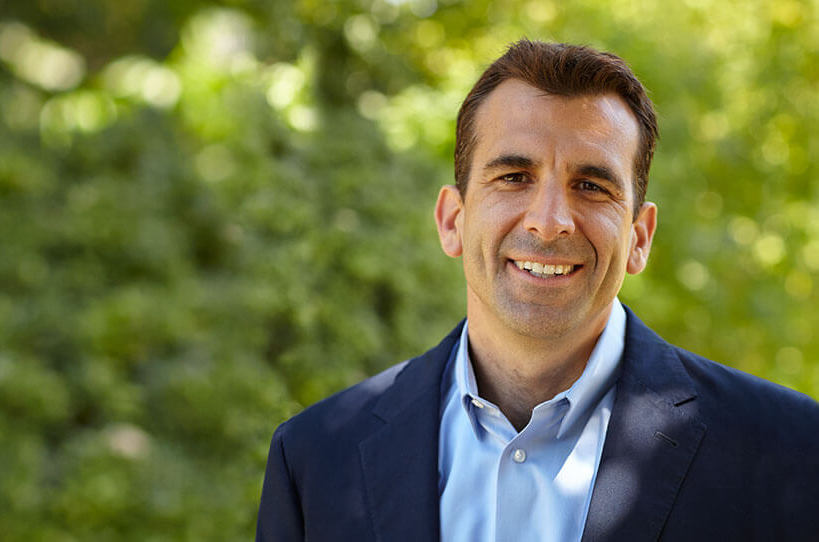By Sam Liccardo
This article was originally published in San Jose Inside
As mayor of the Bay Area’s largest city, I visited the U.S. Capitol regularly seeking partnership on critical issues facing our communities, like homelessness and crime.
“Those are local issues,” I heard all too often.
We know better. Forty-four of America’s largest 50 cities have more than 1,000 unhoused residents. Homelessness spiked 12% nationally last year, leaving 653,000 Americans out in the cold on any given night. This is a national crisis, and Congress needs to treat it like one.
In a congressional session deemed the least productive Congress in decades, we saw wrangling over petty scandals, speakership battles, and a parade of bizarre conduct, from Lauren Boebert to George Santos.
We saw no action to address homelessness. Congress must act.
Many experts urge vastly more Section 8 rental vouchers. They’re right. Housing choice vouchers like Section 8 today serve only a quarter of the severely rent-burdened families who qualify for and need them. Congress has largely abdicated its responsibility for homelessness since cuts of 75% of affordable housing funding four decades ago.
Yet we must acknowledge the political realities of the moment, with a monstrous budget deficit and Republican opposition to more spending on social programs. So how can we get this Congress to act to reduce homelessness?
If Congress just made its existing programs more nimble to support local innovations that have demonstrated impact, our communities could do far more to reduce homelessness.
For example, in the Bay Area, a typical “affordable” apartment complex takes five or six years to build, at a cost of about $937,000 per unit. As the pandemic hit in 2020, we piloted putting prefabricated, modular dorms on public land in San Jose to get medically vulnerable homeless into private dorms to avoid COVID exposure. It worked – we constructed several “quick-build” communities in a matter of months, and at less than $150,000 per apartment.
By the time I left office in 2022, we had constructed five quick-build communities. That year, the number of San Jose’s unsheltered homeless dropped 11% – while increasing in the rest of Santa Clara County. Other cities, such as Mountain View and Redwood City, launched prefabricated transitional communities of their own.
Yet under existing federal law, unhoused people with federal vouchers can’t use those vouchers in any transitional housing in Mountain View, Redwood City, or San Jose. Where cities want to deploy quick-build housing, they have to find the funding for the treatment and job training programs needed to help get people back on their feet.
We could serve many more unhoused residents with a federal voucher that funded some of these costs. Let’s get Congress to eliminate restrictions on the use of vouchers in properly designed transitional housing.
Congressional reforms could similarly reduce the cost and delay of financing affordable housing construction. By boosting the valuation of each Low Income Housing Tax Credit, for example, taxpayers and builders could save millions in every affordable project that they now waste on consultants, bankers, and lawyers tasked with assembling a half-dozen sources of capital–each with its own conflicting and complex rules–in every project.
Congress can also spend public dollars smarter by altering the rules to incentivize builders to reduce construction costs, rather than allocating tax credits based on total construction spending.
More flexible federal approaches could also support innovations that work. In 2017, we piloted a targeted prevention program with Destination:Home and the County, distributing cash assistance to families facing eviction because of a recent job loss or medical emergency. A mere $2,000 average payment reduced the likelihood of those families becoming homeless within the next year by 71%, saving millions in public cost,and more in human misery. Other cities have seized on the results, and innovated further, such as by using artificial intelligence to better target funding to families at risk of homelessness.
Yet you won’t find cash assistance for homeless prevention in any line item of the HUD budget, although the Biden Administration has committed to study the idea. Let’s get Congress to scale its impact.
Finally, Congress must confront the crises of mental illness and addiction by eliminating federal barriers to treatment.
For example, it must modify the prohibition on Medicaid reimbursements to facilities that serve more than 16 beds (what is often called the “Institution for Mental Disease (IMD) exclusion”). Counties like Santa Clara have drastically too few inpatient beds already, and the IMD exclusion makes it even less likely they’ll ever invest in inpatient treatment at anywhere near the needed capacity. Let’s get Congress to eliminate this statutory obstacle.
Let’s get Congress to move. As mayor, I had the pleasure of working with our community to implement these and other innovative solutions. We hired unhoused residents to clean our streets, enabling them to work their way to housing and self-sufficiency. We engaged AirBnB hosts to house homeless college students. We launched a “Cash-For-Trash” initiative that other cities quickly adopted, building trust with hundreds of encamped residents that would help them get housed.
None of these initiatives “solved” homelessness. Some worked better than others. But to address homelessness, we and other local communities need a federal partner.
Let’s get it done.
Sam Liccardo was mayor of San Jose 2015 to 2023. He is a Democratic candidate for the 16th Congressional District.
